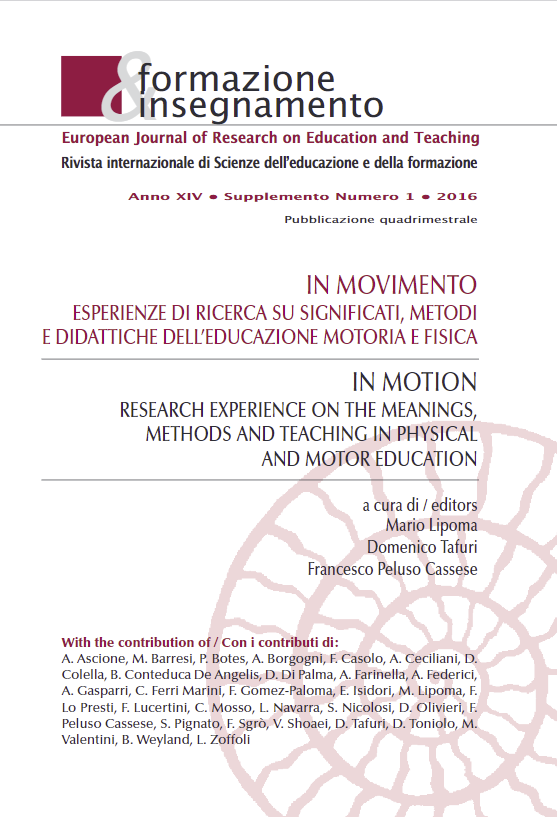Embodied Cognition: the role of body in didactics
Abstract
This work stems from a strong dialogue between psychology, neurosciences and physical and sport sciences in education, united by the enhancement of the multiperspective scientific paradigm of the Embodied Cognition (from now on EC) (Gallese, 2005). Some peculiar practical applications of this approach
(Sousa, 2010) show, first of all, the relationship between body and enhancement of learning and memory; in addition, they show the importance of knowing brain development in evolutionary age in order to understand the behavior of children and adolescents; the particularity of the influence of the
social environment and the cultural climate on learning, as well as the brain’s ability to create new neurons until old age, and its modifiability (concept of plasticity). Starting from the analysis of the body as a scientific mediator of the learning process at neurobiological (Rizzolatti, 2005) and neurophenomenological
(Gallese, 2006) level, a fertile field of study focuses on scientific evidence (Margiotta, 2013) that EC, through its embodied actions (Gomez Paloma, 2013), can offer to the world of didactics (Borghi, Caruana 2013), and on how to develop methodologies that effectively meet students’ educational, and
also special, needs (Ianes, 2013).
In this direction, the goal is to define and validate an “EC-Based model” (Gomez Paloma & Damiani 2015) to enhance corporeality as learning environment and context (setting). All this assuming that the key principles of the Embodied Cognition provide new opportunities for enhancing the differences in learning processes (Cottini, 2014) and implement didactic methodologies adapted to students ‘ needs.
Downloads
Published
How to Cite
Issue
Section
License
Formazione & insegnamento is distributed under Attribution 4.0 International (CC BY 4.0).
For further details, please refer to our Repository & Archiving Policy, as well as our Copyright & Licensing Terms.





